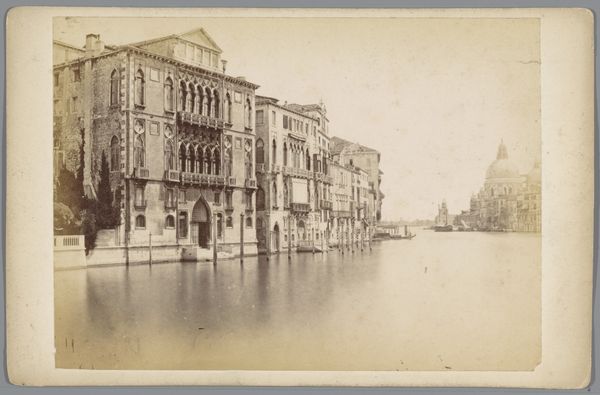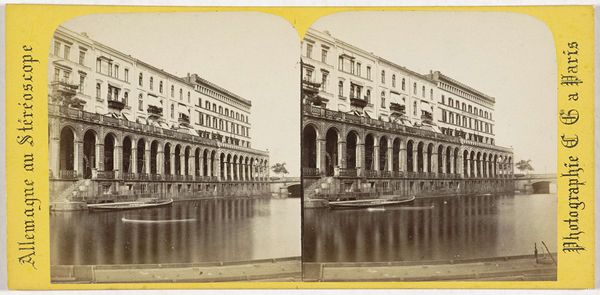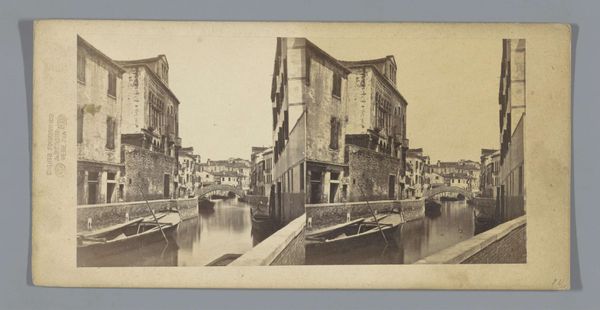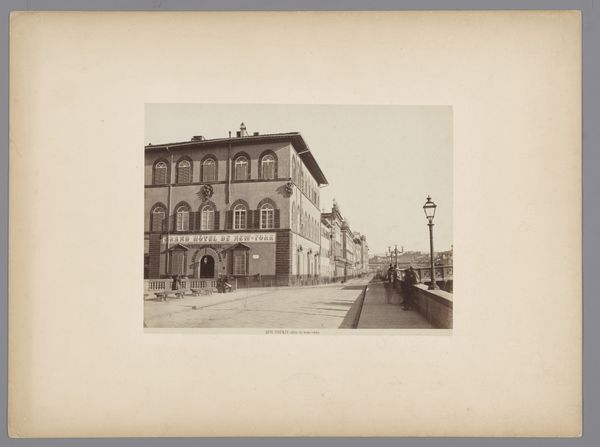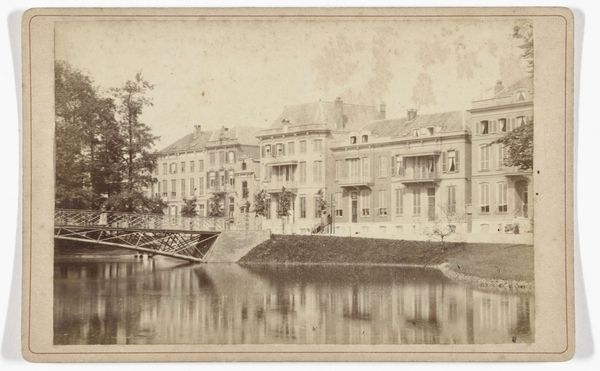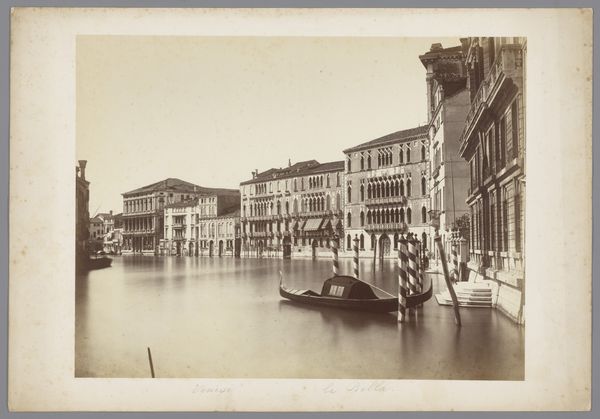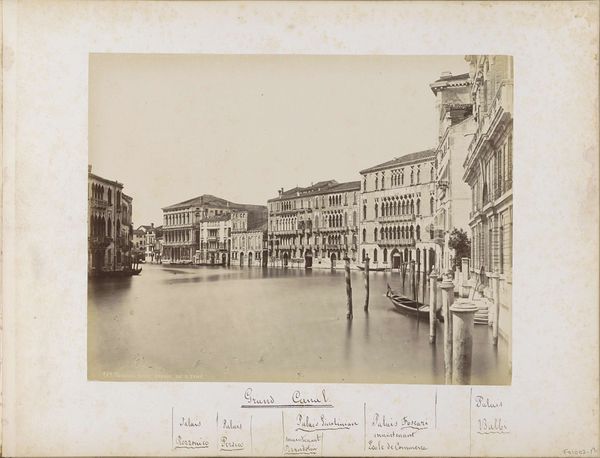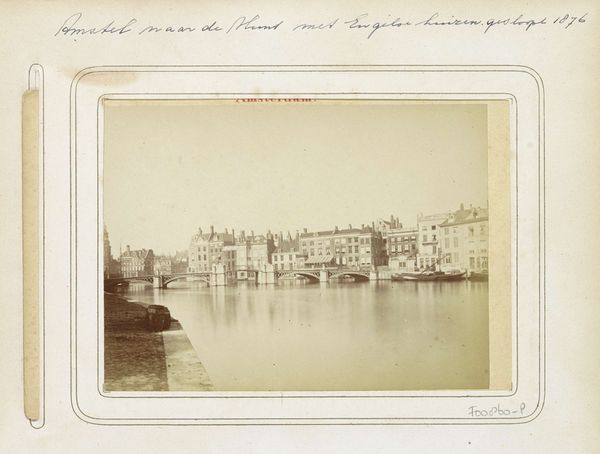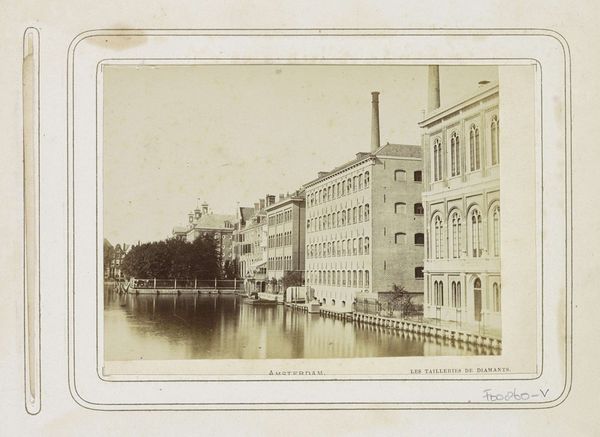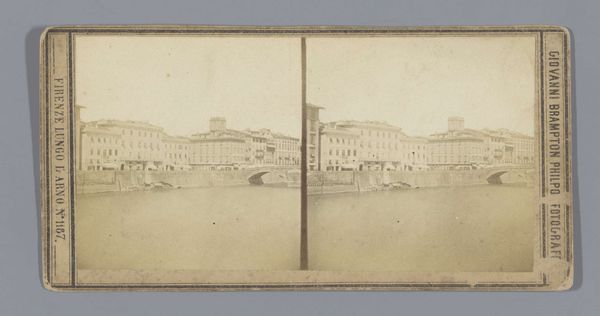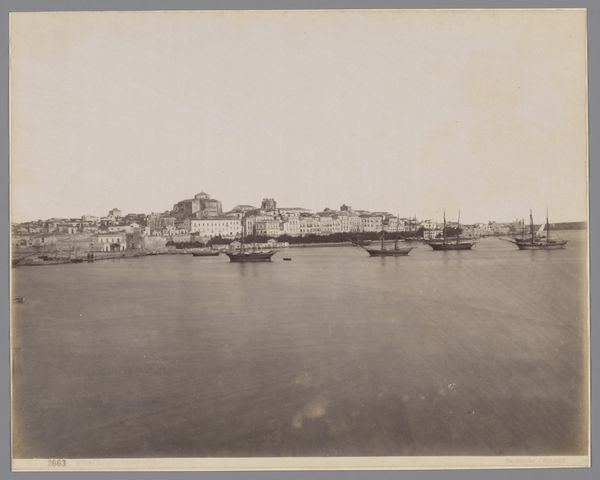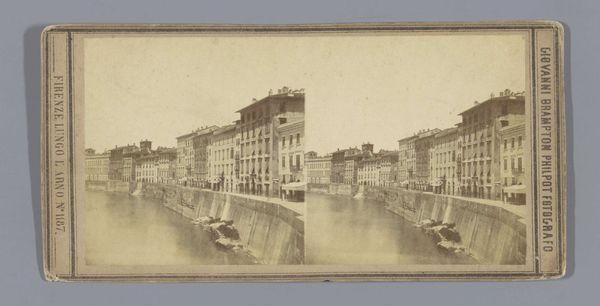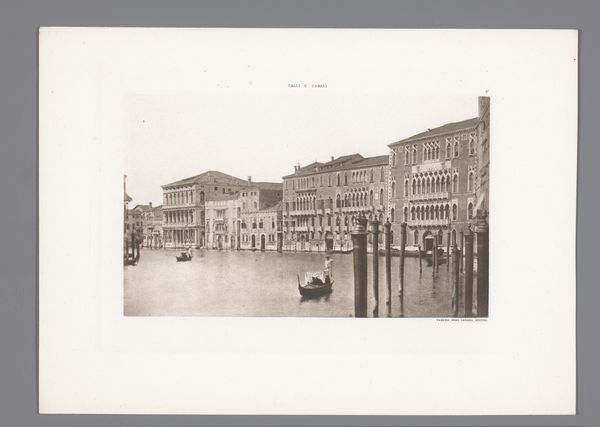
Dimensions: height 85 mm, width 170 mm
Copyright: Rijks Museum: Open Domain
Curator: Looking at this, I immediately feel a sort of serene melancholy. It's so still, almost unnaturally so. The Grand Canal rendered as glass… it’s incredibly haunting and quite romantic! Editor: Indeed, this albumen print, a photographic cityscape, captures a romanticized view of Venice by Antonio Perini sometime before 1879. It presents the Grand Canal in a particularly striking manner, one shaped by the rise of tourism in the 19th century. Curator: Tourism, yes, that makes sense. But look how it distorts perspective, how the light sort of dissolves the city into reflection! It isn't simply documentation; it's actively inventing a feeling. It seems a deliberate staging for the eager eyes of travelers wanting something pretty to remember. Editor: Absolutely. Photography at this time served dual purposes: it was documenting and actively shaping perceptions. The Canal was never simply “there.” Here it's artfully arranged. Consider how the water is devoid of the bustling activity one associates with Venice. Instead, Perini delivers placid perfection, sanitized and ready for consumption. Curator: Sanitized maybe, but still… transporting. Even now I think the stillness draws you in—like a silent movie about a place teeming with sounds we can’t hear in this moment. A lost postcard from another dimension. Editor: I agree; that interplay between real place and ideal vision, a major current in 19th century art and culture, also anticipates modern visual strategies of commercial culture and their visual strategies in defining “destination.” It tells us something about Venice itself as much as the desires of those seeing it. Curator: That friction makes the image truly last in your mind! It’s a dance between the solid buildings and a shimmering illusion. What stories it silently whispers of fleeting lives! Editor: A dance of place and desire, wouldn't you say? It allows us to look at Venice in ways we often neglect— not just as the "City of Water", but also a reflection of our projected hopes and nostalgias.
Comments
No comments
Be the first to comment and join the conversation on the ultimate creative platform.

